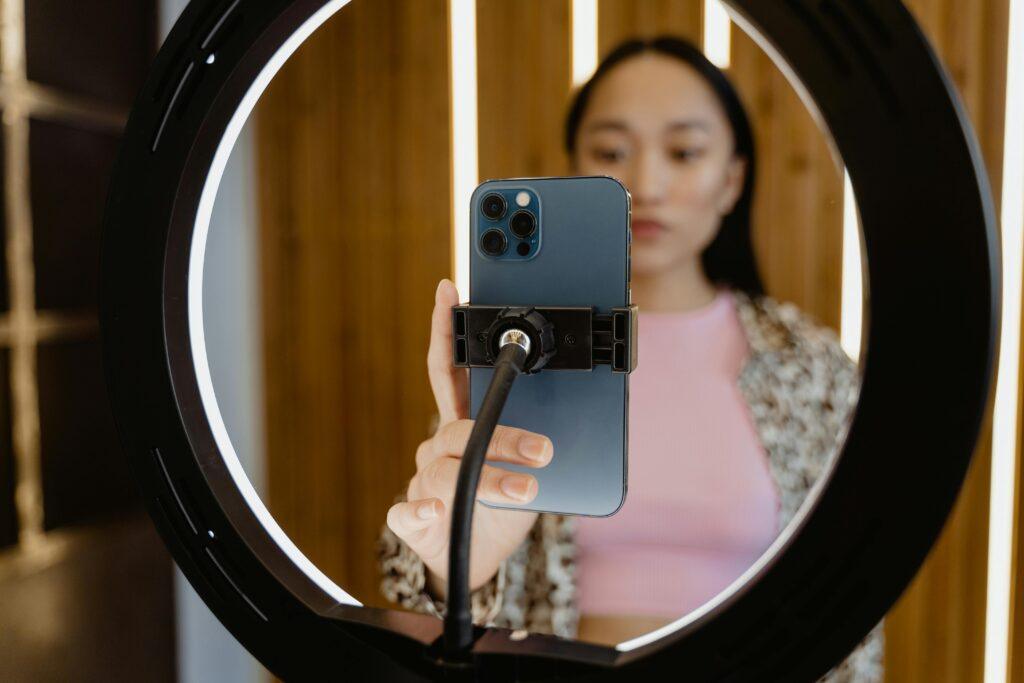13 Electrifying Side Hustles Women Are Using to Crush Their Money Goals

Table of Contents
Are you looking to boost your income and reach your financial goals faster? You’re not alone. In 2025, more women than ever are turning to side hustles to create additional income streams, build wealth, and achieve financial independence.
According to a 2024 survey by the Federal Reserve, 45% of women reported having at least one side hustle, with average monthly earnings of $1,200. These side hustles are helping women pay off debt faster, build emergency savings, and invest for the future.
Whether you’re saving for a dream vacation, paying off student loans, or building a retirement nest egg, side hustles offer a flexible way to earn extra cash without abandoning your day job. The best part? Many of these side hustles can be started with minimal investment and done entirely from home.
In this comprehensive guide, we’ll explore 13 profitable side hustles that women across the United States are using to transform their financial futures. These aren’t just theoretical ideas—these are proven strategies that real women are using right now to generate substantial side income.
Let’s dive into these electrifying side hustles that could help you crush your money goals this year!
What Makes a Great Side Hustle for Women in 2025?
Before we jump into our list of side hustles, let’s talk about what makes a side hustle particularly suitable for women in today’s economy.
The ideal side hustle should:
- Fit around your existing commitments (work, family, education)
- Leverage your unique skills and interests
- Require minimal startup capital (how to start a side hustle with no money)
- Offer flexibility in terms of hours and location
- Provide a decent return on your time investment
- Have potential for growth and scalability
With these criteria in mind, let’s explore the most promising side hustles for women in 2025.
After establishing successful side ventures, discover how transforming active income projects into these strategic passive income streams creates true financial freedom according to lifestyle design experts.
1. Virtual Assistant Services: The Ultimate Flexible Side Hustle
Startup cost: $0-$200
Working as a virtual assistant (VA) has become one of the most popular side hustles for women seeking flexible, remote work. As a VA, you’ll provide administrative support to businesses and entrepreneurs, handling tasks like email management, scheduling, social media updates, and customer service.
This side hustle is perfect for organized women with strong communication skills. And the best part? You can start with zero investment if you already have a computer and internet connection.
According to a 2024 study by FlexJobs, virtual assistants earn an average of $20-35 per hour, with specialized VAs commanding $50+ per hour. Women with expertise in specific industries like legal, medical, or real estate can charge premium rates for their specialized knowledge.
Megan Thompson, a single mom from Chicago, started her VA side hustle while working full-time: “I began with just 10 hours per week helping a local real estate agent. Within six months, I had three clients and was earning an extra $1,500 monthly. The flexibility allows me to work after my kids go to bed.”
How to get started with this side hustle:
- Identify your marketable skills (organization, writing, customer service, etc.)
- Create a simple website or profile on platforms like Upwork or Fiverr
- Define your service packages and rates
- Network in Facebook groups and LinkedIn communities for VAs
- Ask friends or former colleagues if they need assistance
Many women start by offering 5-10 hours per week of VA services, gradually expanding as they build their client base. This is one of the best side hustles for beginners in 2025 because it builds on skills most women already have from their primary careers.
2. Online Content Creation: Turn Your Passion Into Profit
Startup cost: $0-$500
Content creation has exploded as a viable side hustle, with platforms like YouTube, TikTok, Instagram, and blogs offering multiple monetization paths.
According to Influencer Marketing Hub, the creator economy is now worth over $250 billion, with millions of people earning part or full-time incomes creating content online.
Women are particularly thriving in niches like:
- Finance and budgeting tutorials
- Lifestyle and wellness content
- Parenting hacks and advice
- Cooking and meal preparation
- Home organization and decor
According to the U.S. Bureau of Labor Statistics, content creators can earn anywhere from a few hundred dollars to $10,000+ monthly once they’ve built an audience.
The key to success in content creation is consistency and finding your unique voice. While building an audience takes time, this side hustle has unlimited earning potential through ad revenue, sponsorships, affiliate marketing, and product sales.
Sarah Johnson, a teacher from Atlanta, started a TikTok account sharing quick classroom organization tips: “I never expected it to take off, but after six months of consistent posting, I was earning more from brand partnerships than from my teaching job. It’s now my full-time focus.”
How to get started with this side hustle:
- Choose a platform and niche that excites you
- Create a content calendar using free tools like Trello or Notion
- Invest in basic equipment (good lighting and a decent microphone go a long way)
- Post consistently for at least 3-6 months
- Engage genuinely with your audience and similar creators
Remember, content creation is a marathon, not a sprint. Be patient as you build your following. This is one of the most flexible easy side hustles to do from home since you can create content on your own schedule.

3. Freelance Writing and Editing: Monetize Your Way With Words
Startup cost: $0-$100
If you have a way with words, freelance writing is a flexible side hustle with strong demand. Companies need content for blogs, websites, newsletters, and social media—and they’re willing to pay for quality writing.
According to the Content Marketing Institute, 70% of businesses are increasing their content marketing budgets, creating abundant opportunities for freelance writers.
Specialized writers in fields like finance, healthcare, or technology can command premium rates, often $75-150 per hour or $0.25-$1.50 per word, according to the Editorial Freelancers Association.
Jennifer Liu, a marketing professional from Portland, started freelance writing about personal finance: “I began by writing one article weekly for a personal finance blog. Now I write for five different financial publications and earn $4,000 monthly on top of my day job.”
How to get started with this side hustle:
- Create a portfolio of writing samples (even if they’re unpaid initially)
- Set up profiles on platforms like Contently, ClearVoice, or Upwork
- Join writing groups on Facebook and LinkedIn
- Pitch directly to publications in your area of expertise using these pitch templates from the American Society of Journalists and Authors
- Network with content managers and marketing directors
Many women start with a goal of writing 2-3 articles per week, eventually building to a steady client base that provides consistent income. This is among the most legitimate online side hustles that pay well while requiring minimal startup costs.
Women who maximize their side hustle potential understand that implementing these long-term wealth building approaches significantly amplifies their additional income as shown in our financial research.
4. Online Tutoring and Teaching: Share Your Knowledge
Startup cost: $0-$300
Online education has seen tremendous growth, creating opportunities for women with expertise in various subjects to earn money through tutoring and teaching.
According to the U.S. Department of Education, online education enrollment has increased by 30% since 2020, creating unprecedented demand for qualified instructors.
You can tutor students in academic subjects, teach language lessons, offer test preparation, or even create and sell courses on platforms like Udemy or Teachable.
According to Tutors.com, online tutors typically earn $25-80 per hour depending on their subject expertise and experience.
Michelle Parker, a chemical engineer from Houston, tutors high school students in math and science: “I tutor for 12 hours weekly after my day job and earn about $2,000 monthly. It’s rewarding to help students succeed, and the extra income allowed me to pay off my student loans two years early.”
How to get started with this side hustle:
- Determine what subjects you can teach confidently
- Create profiles on tutoring platforms like VIPKid, Chegg, or Wyzant
- Consider creating a specialized course on platforms like Udemy or Skillshare
- Set up a professional Zoom account for direct client sessions
- Ask for testimonials from your first few students
This side hustle can be particularly rewarding, as you’re not just earning extra income but also making a positive impact on students’ lives. It’s one of the best side hustles for beginners in 2025 if you have academic or professional expertise to share.
5. E-commerce and Online Selling: Build Your Digital Shop
Startup cost: $100-$1,000
E-commerce remains one of the most scalable side hustles for women. According to the U.S. Census Bureau, e-commerce sales continue to grow at double-digit rates annually.
Options include:
- Selling handmade products on Etsy
- Dropshipping products through Shopify
- Print-on-demand merchandise via Printful
- Retail arbitrage on Amazon or eBay
- Digital product sales (printables, templates, etc.)
According to the Small Business Administration, e-commerce sales continue to grow at 15% annually, creating abundant opportunities for side hustlers.
Digital products are particularly attractive for their high margins and passive income potential. Once created, digital products can be sold repeatedly with minimal additional effort.
Ashley Williams, a graphic designer from Miami, sells digital planners and templates: “I spent one weekend creating a set of budget planners and now earn $2,500 monthly in passive income. The initial setup was intensive, but now sales happen while I sleep.”
How to get started with this side hustle:
- Research products with good profit margins using tools like Jungle Scout
- Set up a shop on a platform that fits your business model
- Create compelling product listings with quality photos
- Develop a simple marketing strategy (social media, email list)
- Start small and reinvest profits to grow inventory
While e-commerce requires more upfront investment than some other side hustles, it also offers significant scaling potential. This is how to make extra money on the side with the possibility of growing into a full-time business.
Beyond supplemental income generation, explore how strategic investment of your side hustle earnings accelerates your journey to financial independence according to wealth advisors.
6. Social Media Management: Help Businesses Build Their Online Presence
Startup cost: $0-$200
As businesses recognize the importance of social media presence, demand for skilled social media managers continues to grow. According to Hootsuite’s Social Trends Report, 74% of businesses plan to increase their social media marketing budgets.
This side hustle is perfect for women who understand different social platforms and enjoy creating engaging content.
Social media managers typically earn $15-50 per hour or $300-1,500 per client monthly, according to PayScale.
Lauren Thomas, a marketing coordinator from Denver, manages social media for three local restaurants: “I spend about 10 hours weekly creating content and scheduling posts. The $1,800 monthly I earn goes directly into my investment accounts.”
How to get started with this side hustle:
- Master 2-3 social platforms thoroughly
- Create sample content calendars and posts
- Learn basics of social media analytics through free courses on LinkedIn Learning
- Build a portfolio by helping friends or local small businesses
- Network with business owners who struggle with social media
Many social media managers start with 2-3 clients, working evenings and weekends before expanding their client roster. This is one of the legitimate online side hustles that pay well while leveraging skills many women already use personally.

7. Freelance Graphic Design: Create Visual Impact
Startup cost: $0-$500
If you have design skills, freelance graphic design offers flexible income opportunities. According to the Creative Group’s Salary Guide, demand for freelance designers continues to grow as businesses need constant visual content for marketing.
Businesses need logos, social media graphics, marketing materials, and website designs—all projects that can be completed remotely on your schedule.
According to the American Institute of Graphic Arts, freelance designers earn $25-85 per hour depending on specialization and experience.
Nicole Martinez, an advertising designer from Seattle, takes on freelance projects evenings and weekends: “I specialize in branding for wellness businesses, which allows me to charge premium rates. I work about 15 hours weekly on my side hustle and earn $3,000 monthly in addition to my full-time job.”
How to get started with this side hustle:
- Build a portfolio showcasing your design style using free tools like Canva or Adobe Express
- Choose a specific niche (e.g., logo design, social media graphics)
- Create profiles on platforms like Fiverr, 99designs, or Upwork
- Network with marketing professionals who often need design help
- Consider offering package deals for recurring clients
This side hustle allows creative women to monetize their artistic skills while building a diverse portfolio. It’s one of the easy side hustles to do from home if you already have design skills or are willing to learn.
8. Remote Bookkeeping: Organize Financial Success
Startup cost: $100-$500
Bookkeeping remains an in-demand service that can be performed remotely, making it an excellent side hustle for detail-oriented women with financial aptitude.
According to the American Institute of Professional Bookkeepers, businesses are increasingly outsourcing bookkeeping to remote professionals.
Small businesses often prefer to outsource bookkeeping rather than hire full-time staff, creating steady opportunities for side hustlers.
According to the National Association of Certified Public Bookkeepers, part-time remote bookkeepers typically earn $20-50 per hour or $200-500 per client monthly.
Rebecca Chen, an accountant from Philadelphia, manages books for four small businesses: “I spend about 15 hours weekly on my bookkeeping side hustle, earning $2,400 monthly. The work is predictable and fits perfectly around my day job schedule.”
How to get started with this side hustle:
- Learn bookkeeping software like QuickBooks or Xero
- Consider obtaining a bookkeeping certification through the American Institute of Professional Bookkeepers
- Offer services to local small businesses
- Join networking groups for entrepreneurs through your local Chamber of Commerce
- Create service packages for different business sizes
This side hustle can be particularly stable, as bookkeeping clients tend to need ongoing monthly support. It’s one of the most legitimate online side hustles that pay consistently while providing valuable experience.
9. Rental Income Streams: Monetize Your Assets
Startup cost: Varies
While traditional real estate investing requires significant capital, creative rental side hustles offer lower-cost entry points. According to the Consumer Financial Protection Bureau, alternative rental income streams are gaining popularity.
Options include:
- Renting a spare room on Airbnb
- Renting storage space in your garage or basement via Neighbor
- Renting out your car on Turo or Getaround
- Renting equipment, tools, or special occasion items on Fat Llama
- Participating in peer-to-peer lending through Prosper
According to Airbnb, the average host earns $13,800 annually from a spare room. Car-sharing platforms report average earnings of $500-700 monthly for vehicle owners.
Tara Reynolds, a nurse from Austin, rents her car on weekends: “I walk to work and rarely use my car on weekends. By renting it out, I earn about $600 monthly that goes directly toward my student loan payments.”
How to get started with this side hustle:
- Identify underutilized assets you could rent out
- Research local demand and pricing
- Create listings on appropriate platforms
- Invest in basic upgrades to maximize rental value
- Understand tax implications and insurance needs through the IRS sharing economy tax center
This category of side hustles leverages assets you already own, making it an efficient way to generate extra income. It’s how to start a side hustle with no money (assuming you already own the assets).
10. Virtual Event Planning: Orchestrate Digital Gatherings
Startup cost: $0-$300
As remote work and digital gatherings continue to grow, virtual event planning has emerged as a lucrative side hustle. According to LinkedIn’s Global Talent Trends, virtual events are now a permanent part of the professional landscape.
Women with organizational skills and attention to detail can excel at coordinating online conferences, workshops, and celebrations.
According to EventMB, virtual event planners typically charge $500-2,500 per event, with experienced planners earning even more for complex conferences.
Danielle Harper, a project manager from New York, plans virtual conferences on weekends: “I started by planning a virtual conference for my alumni association. Now I plan two corporate events monthly, earning about $3,000 in additional income.”
How to get started with this side hustle:
- Familiarize yourself with virtual event platforms like Hopin and Zoom Events
- Create packages for different types of events
- Network with business organizations and professional groups
- Build a portfolio by volunteering for nonprofit events
- Develop relationships with virtual speakers and entertainers
This side hustle combines project management skills with creativity and technical knowledge. It’s one of the best side hustles for beginners in 2025 who have strong organizational abilities.
11. Personal Styling and Fashion Consulting: Style With Purpose
Startup cost: $0-$200
Women with fashion sense and styling skills can build profitable side hustles helping others look their best. According to The State of Fashion report by McKinsey and the Business of Fashion, personalized styling services are experiencing significant growth.
Services might include:
- Virtual closet audits
- Personal shopping (in-person or online)
- Style consultations for special events
- Capsule wardrobe creation
- Sustainable fashion guidance
According to the Association of Image Consultants International, style consultants charge $75-300 per hour depending on services and location.
Maria Rodriguez, a retail manager from Los Angeles, offers virtual styling sessions evenings and weekends: “I help busy professionals build functional wardrobes that make them feel confident. I work with 5-6 clients monthly, earning about $2,000 in additional income.”
How to get started with this side hustle:
- Define your unique styling philosophy
- Create before/after transformations for your portfolio
- Offer initial consultations at reduced rates
- Network with complementary businesses (photographers, makeup artists)
- Build a social media presence showcasing your style expertise
This side hustle allows fashion-forward women to monetize their eye for style while helping clients build confidence. It’s an easy side hustle to do from home using video consultations.
12. Wellness Coaching: Nurture Health and Balance
Startup cost: $200-$1,000
The wellness industry continues to grow, creating opportunities for women with backgrounds in nutrition, fitness, meditation, or holistic health practices. According to the Global Wellness Institute, the wellness economy is valued at over $4.5 trillion globally.
Wellness coaches typically charge $50-150 per session or $300-1,000 for packaged programs, according to the National Board for Health and Wellness Coaching.
Jessica Chen, a human resources director from Chicago, coaches clients on stress management: “I became certified as a wellness coach after experiencing burnout myself. Now I help professionals create sustainable self-care routines, earning about $1,500 monthly while working 8-10 hours weekly.”
How to get started with this side hustle:
- Obtain relevant certifications in your specialty through organizations like the National Board for Health and Wellness Coaching
- Develop signature coaching programs
- Create a simple website and social media presence
- Offer introductory sessions at reduced rates
- Generate testimonials from initial clients
This side hustle allows you to make a positive impact on clients’ health while building a flexible business. It’s one of the best side hustles for beginners in 2025 who have experience in health-related fields.

13. Podcast Production Services: Craft Audio Excellence
Startup cost: $200-$800
As podcasting continues to explode in popularity, many hosts need technical help with editing, show notes, guest coordination, and promotion. According to Edison Research’s Infinite Dial report, podcast listenership grows annually.
Podcast producers typically earn $30-75 per episode or $500-2,000 monthly per client, according to Podcast Insights.
Amber Jackson, a music teacher from Nashville, produces podcasts for three clients: “I use my audio background to edit and enhance podcast episodes. I work about 12 hours weekly and earn $2,500 monthly that goes directly into my investment accounts.”
How to get started with this side hustle:
- Learn audio editing software like Audacity (free) or Adobe Audition
- Create sample before/after edits
- Network in podcasting communities like She Podcasts
- Offer comprehensive packages (editing, show notes, publishing)
- Target specific podcast niches that interest you
This technical side hustle allows women to work behind the scenes in the growing audio content industry. It’s one of the legitimate online side hustles that pay well while allowing complete schedule flexibility.
How to Choose the Right Side Hustle for You
With so many side hustle options available, how do you choose the right one? Consider these factors:
- Skills inventory: What are you already good at or knowledgeable about? The U.S. Department of Labor’s MySkills MyFuture tool can help you identify transferable skills.
- Time availability: How many hours weekly can you realistically commit?
- Financial goals: How much extra income do you need? According to Northwestern Mutual’s 2024 Planning & Progress Study, specific financial goals lead to better outcomes.
- Startup capital: How much can you invest initially?
- Growth potential: Do you want a long-term business or short-term income?
The most successful side hustles align with your existing strengths while stretching you to develop new skills.
Many successful side hustlers discover that applying these specialized budgeting techniques to their additional income dramatically accelerates debt elimination as demonstrated in our case studies.
Starting Your Side Hustle with No Money
Many women hesitate to start side hustles because they believe significant startup capital is required. However, several options on our list can be started with zero investment:
- Virtual assistant services using your existing computer
- Content creation on free platforms
- Freelance writing using free portfolio sites
- Online tutoring through established platforms
- Social media management for local businesses
The key is leveraging skills and resources you already possess to generate initial income, then reinvesting strategically as you grow.
According to the Federal Reserve Bank of St. Louis, 60% of successful side hustles begin with under $100 in startup costs.
Amanda Torres, a customer service representative from Dallas, started her virtual assistant business with just her laptop: “I created free profiles on job platforms and landed my first client within two weeks. After three months, I had earned enough to invest in better equipment and marketing.”
Balancing Your Side Hustle with Full-Time Work
Managing a side hustle alongside full-time employment requires intentional planning. According to the American Psychological Association, setting clear boundaries is essential for preventing burnout.
Successful side hustlers recommend:
- Time blocking: Designate specific hours for your side hustle
- Batching tasks: Group similar activities to increase efficiency
- Setting boundaries: Communicate clearly with clients about your availability
- Using productivity tools: Leverage automation and scheduling apps like Asana or Trello
- Preventing burnout: Schedule regular breaks and self-care
Remember that consistency matters more than intensity. Even dedicating 5-10 hours weekly to your side hustle can generate meaningful results over time.
Katherine Mendez, a healthcare administrator from Phoenix, balances her e-commerce side hustle with full-time work: “I dedicate Tuesday and Thursday evenings plus Sunday mornings to my side business. Having a consistent schedule helps me stay productive without feeling overwhelmed.”
Legitimizing Your Side Hustle
As your side income grows, consider these steps to legitimize your business:
- Separate finances: Open a business bank account with a reputable institution like Chase Business Banking
- Track income and expenses: Use accounting software like QuickBooks Self-Employed or Wave (free)
- Understand tax obligations: Set aside money for quarterly estimated taxes, as recommended by the Internal Revenue Service
- Consider business structure: Determine if an LLC is appropriate by consulting the Small Business Administration’s guide
- Obtain necessary permits: Research local requirements for your industry through your city’s business licensing department
According to the Internal Revenue Service, all side hustle income must be reported, even if you haven’t formally registered a business.
Scaling Your Side Hustle
Once your side hustle is established, you might consider scaling. According to SCORE, businesses that deliberately plan for growth are 30% more likely to succeed.
Consider these scaling strategies:
- Raise your rates: As you gain experience, adjust pricing accordingly
- Automate processes: Implement systems to reduce manual work
- Outsource tasks: Hire help for time-consuming aspects
- Create passive income streams: Develop products that sell while you sleep
- Transition to full-time: Consider when your side hustle might replace your day job
Many successful entrepreneurs began with modest side hustles that eventually became thriving businesses.
Emily Warren, a former marketing manager from Boston, scaled her social media management side hustle: “I started with two clients, working nights and weekends. After 18 months, I had 10 clients and was earning more than my corporate salary. I made the leap to full-time entrepreneurship and haven’t looked back.”
How much can I realistically earn from a side hustle?
Earnings vary widely depending on the type of side hustle, time invested, and your expertise. According to Bankrate’s Side Hustle Survey, beginning side hustlers typically earn $500-1,500 monthly working 10-15 hours weekly. As you build skills and clients, side hustle income can grow to $2,000-5,000+ monthly.
Most successful side hustlers reinvest a portion of their earnings back into their business, which accelerates growth over time.
How do I find time for a side hustle as a busy woman?
Start small with 5-10 hours weekly, perhaps during early mornings, evenings, or weekends. Look for pockets of unused time in your schedule. Many successful side hustlers use lunch breaks, commute time (if on public transit), or time typically spent on social media scrolling.
The American Time Use Survey from the Bureau of Labor Statistics found that the average American has approximately 5 hours of leisure time daily—identifying even a portion of this time for your side hustle can yield significant results.
Will I need to pay taxes on my side hustle income?
Yes, all income earned through side hustles is taxable. The IRS recommends making quarterly estimated tax payments if you expect to owe $1,000+ in taxes from your side income.
The good news is that business expenses are often tax-deductible, including home office space, equipment, software subscriptions, and professional development. Consult with a tax professional to understand deductions available to self-employed individuals.
How do I market my side hustle without being pushy?
Focus on providing value through helpful content, testimonials, and case studies. According to the Content Marketing Institute, value-based marketing generates 3x more leads than traditional advertising.
Leverage word-of-mouth by encouraging satisfied clients to refer friends. Join online communities where your target clients gather and establish yourself as a helpful resource before promoting services.
Can I start a side hustle while working full-time without violating employment agreements?
Review your employment contract for non-compete clauses or outside employment policies. Many companies allow side hustles as long as they don’t compete directly with employer business or utilize company resources.
According to the Society for Human Resource Management, 70% of organizations have policies regarding outside employment. When in doubt, discuss with HR or consult an employment attorney.
How long does it typically take for a side hustle to become profitable?
Most side hustles begin generating some income within 1-3 months, although reaching significant profitability usually takes 6-12 months of consistent effort.
According to a Small Business Administration study, most side businesses reach profitability faster than full-time startups due to lower overhead and more focused offerings.
Digital product-based hustles often require longer upfront investment before generating substantial passive income.
Do I need a business license for my side hustle?
Requirements vary by location and industry. Many side hustlers can operate as sole proprietors without formal registration initially, but as income grows, you may need business licenses, permits, or professional certifications depending on your services.
The Small Business Administration provides resources to determine what licenses might be required in your area and industry.
How do I price my services or products appropriately?
Research competitor pricing in your area, calculate your costs (including time), and consider your unique value proposition. Many side hustlers begin slightly below market rate to attract initial clients, then increase prices as demand grows. Avoid underpricing, which can lead to burnout and resentment.
Can I run multiple side hustles simultaneously?
While possible, focusing on one primary side hustle typically yields better results initially. Master one income stream before adding others to avoid spreading yourself too thin. Consider related hustles that leverage the same skills or client base.
How do I know when to quit my day job for my side hustle?
Financial advisors typically recommend waiting until your side hustle consistently generates income comparable to your salary for at least 6-12 months. Build an emergency fund covering 6+ months of expenses before making the leap to full-time entrepreneurship.
Your Side Hustle Journey Starts Now
Side hustles offer women unprecedented opportunities to increase income, develop new skills, and achieve financial goals faster. From virtual services to e-commerce ventures, today’s digital economy provides flexible options for every interest and skill set.
The most important step is simply to begin. Choose a side hustle that aligns with your strengths and available time, start small, and commit to consistent action. Remember that even a few hours weekly can compound into significant income over time.
Which of these 13 side hustles resonates most with you? The perfect time to start crushing your money goals is right now.
Remember: This article is for informational purposes only and does not constitute professional financial advice. Always consult with qualified financial and tax professionals regarding your specific situation.




